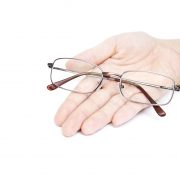The Best Polarized Lenses for Different Activities
Do you want sunglasses to protect your eyes for health reasons, or perhaps you just want to make a fashion statement? Either way, your local optician in Portland, OR can help. Here are the specific recommendations for color-polarized lenses based on how they will be used.
Choosing Color-Polarized Lenses Based on Activity
All sunglasses are tinted to protect your eyes from the sun. However, not all of them are polarized. It’s best to opt for polarized sunglasses in Portland, OR because they significantly reduce the glare and halos caused by the sun.
Here are the recommended uses for color-polarized lenses based on activity.
- Color Polarized Lenses as a Fashion Statement
If you are wearing color polarized lenses as a fashion statement, any color will work.
- Color Polarized Lenses for Computer Use
For computer use, it’s recommended you choose blue light-blocking glasses. These are particularly helpful for people with migraines.
- Color Polarized Lenses for Indoor Use
Yellow-tinted lenses are best for indoor use because they help increase the contrast caused by low-light conditions.
- Color Polarized Lenses for Snow Sports
Yellow-tinted lenses are also recommended when you are participating in snow sports because they help with contrast issues in hazy conditions.
- Color Polarized Lenses for Outdoor Precision Sports
If you enjoy precision sports like golf, green-tinted polarized lenses are recommended because they reduce glare and filter a portion of the blue light spectrum. This will make it easier to see your golf balls.
- Color Polarized Lenses for Water Activities
For water activities, amber or brown polarized lenses are recommended. These colors make your surroundings appear brighter and clearer. They also reduce the reflection from the water.
- Color Polarized Lenses for Driving
When it comes to driving, there are a variety of lens colors that might work for you. Therefore, you will need to try each of them to see which one you prefer. However, most people seem to prefer amber or gray polarized lenses. The grays seem to work better in bright and sunny conditions and the amber color seems to work better on cloudy, rainy, or overcast days.
For night driving, though, most people find the yellow lenses work best in low-light conditions because they help with contrast.
What’s Next?
If you are looking for a reputable optician in Portland, OR, please Contact Asterix Eyewear today. We are Portland’s premier dispensing opticians and we specialize in repairs, sales, and service.






